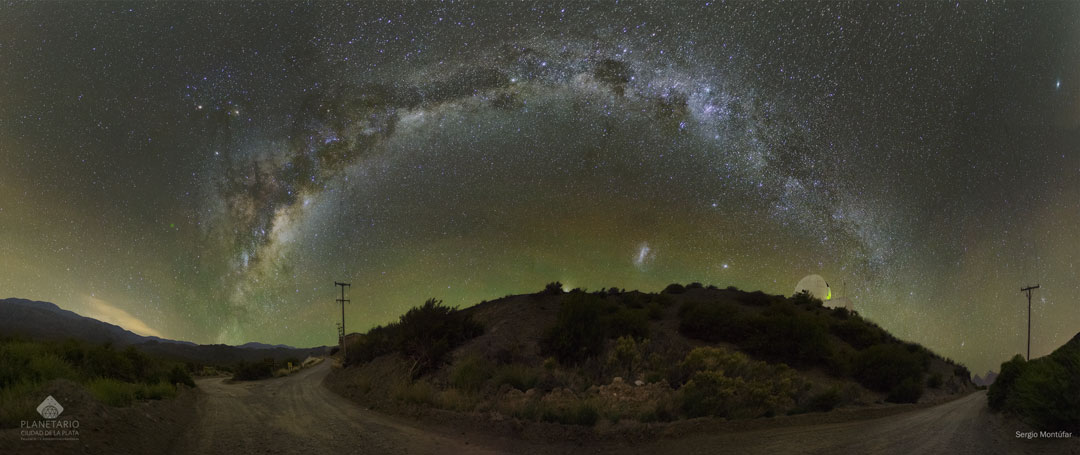Ciel mystérieux au-dessus de l'Argentine
Pouvez-vous trouver la comète ? Certes, un oeil attentif peut trouver des milliers d'étoiles, des dizaines de constellations, quatre planètes, trois galaxies et la bande centrale de notre propre galaxie, la Voie Lactée, le tout visible dans le ciel de ce spectaculaire panorama à 180 degrés. Et aussi, si vous savez quoi chercher, vous pouvez identifier une lueur verte omniprésente, un nuage terrestre, le pôle sud céleste et même un amas d'étoiles lointaines. Mais ceux-ci sont tous plus faciles à trouver que la comète 252P / LINEAR. Cette image, prise au parc national El Leoncito, en Argentine, début avril, comprend également le dôme du télescope Jorge Sahade sur la colline, à l'extrême droite. Avez-vous déjà trouvé la comète ? Si c'est le cas, tant mieux (c'était la tache verte à gauche), mais la chose la plus difficile à trouver est le Petit Nuage de Magellan.
L'image d'astronomie du jour (Astronomy Picture Of the Day - APOD)
Traduction réalisée par Patrick Babayou
D'autres images d'astronomie...
Ailleurs sur le web
Galaxies | Science Mission Directorate
Our galaxy, the Milky Way, is typical: it has hundreds of billions of stars, enough gas and dust to make billions more stars, and about six times as much dark matter as all the stars and gas put together. And it’s all held together by gravity. Like more than two-thirds of the known galaxies, the Milky Way has a spiral shape. At the center of the spiral, a lot of energy and, occasionally, vivid f [...]

science.nasa.gov
Stars | Science Mission Directorate
How do stars form and evolve? Stars are the most widely recognized astronomical objects, and represent the most fundamental building blocks of galaxies. The age, distribution, and composition of the stars in a galaxy trace the history, dynamics, and evolution of that galaxy. Moreover, stars are responsible for the manufacture and distribution of heavy elements such as carbon, nitrogen, and oxygen, [...]

science.nasa.gov
Multiwavelength Milky Way Product Page
Astrophysics researcg=h to support astroparticle (gamma-ray and cosmic-ray), x-ray, gravitational-wave, observational cosmology, exoplanet and stellar astrophysics.

mwmw.gsfc.nasa.gov

